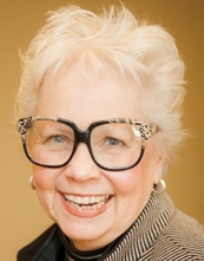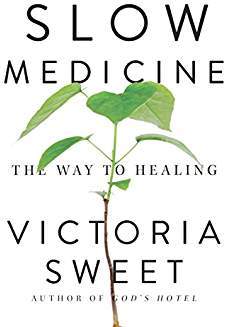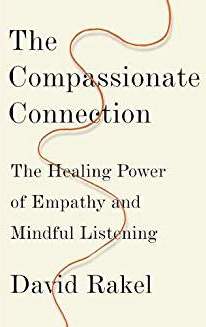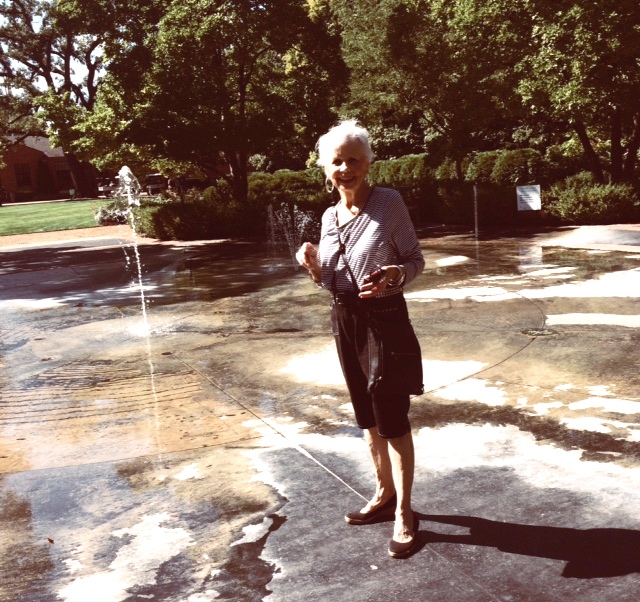Today the Pits, Tomorrow the Wrinkles
David and I have a silly cheer we use whenever we accomplish
something worth bragging about. It’s that old Sunsweet Prunes
advertisement that aired in the ‘50s. We’ve modernized the quote
slightly. “Today the pits. Tomorrow the wrinkles. Sunkist Prunes marches on!” This is often accompanied by fist-pumping and is a little puzzling to our grandchildren. The “pits” have been a series of physical distresses that laid me low
for nearly 7 months! Starting with a hiatal hernia diagnosis (which in
reality was a large paraesophageal hernia that had crowded my lungs,
heart, etc. into the upper part of the chest), a severe digestive
difficulty manifested itself with getting food down. Over six months,
this resulted in a total weight-loss of 43 pounds. In short time, I
weighed 111 pounds, down from my original 154. This is where the “wrinkles” part comes in. Without clothes (or to
spare you sudden visual flashes, while scantily clad), I looked like an
Auschwitz survivor, starving, skin hanging most unattractively on my
legs, arms, stomach and chest. Yep! Wrinkles that had never accented my
features now marched across my face. Due to an unintended
semi-starvation diet, I weighed less than when I met David at 16 years
of age and married him at 18. My regular size 12 was reduced to a
very-skinny size 8 (maybe even a size 6). Just as an example regarding the eating dilemma, one morning I ate a bowl of homemade curried butternut-squash soup with fresh blended garden zucchini. (At times during this months-long odyssey, our daughter Melissa Mains-Timberlake and her family took me in to supervise nutrition, rest and, hopefully, recovery. They also wanted to give David a break from the exhausting role of caregiver.) Each member of this family of 4 is a healthy-food advocate—no fast food passes the doors of their home! My care included nightly massages with essential oils; Melissa, a certified life-coach, uses essential oils as part of her protocols. Anyway, due to the lack of flexing digestive muscles, the six ounces of smooth soup took about 20 minutes to finally reach the juncture between the esophagus and the stomach, which as a part of hernia surgery had been wrapped with a technique termed a Nissen fundoplication. After reaching the juncture with the stomach, I could never tell how long even smooth food would eventually pass into the digestive organs. The overall diagnosis was dysphagia (difficulty swallowing food), or to be more specific, esophageal dysmotility (impairment of the muscles of the digestive system). My surgeon, who many of the hospital staff raved about and about whom and many of his colleagues gave me unsolicited endorsements (“I’d trust my life in his hands!”), had declared post-operatively that the laparoscopic surgery had been “textbook.” Now, months later, he manfully volunteered that the “Nissen” at the juncture was probably too tight, and if my eating didn’t improve, I’d have to undergo a repair. So three endoscopic procedures later, followed by two laparoscopic surgeries, six months of semi-starvation, consultations with three gastroenterologists, one endocrinologist, my surgeon, a hematologist (due to developing anemia), and my general physician all resulted in three hospitalizations (one seven days long), during the hernia repair, a firm diagnosis was eventually made. This meant adding an infectious-disease specialist to the above list. During hernia-repair surgery, it was discovered that some sort of strong allergic reaction had covered the mesh (which is put in place partly to keep the hernia from creeping back out of its appropriate position). The Nissen had apparently already been loosened by months of violent gagging brought on by my determination to get some food down into my stomach. The surgeon described chipping away at what he described as “a cement-like substance,” removed some of the mesh (what was left was embedded by flesh; there was “no way” the hernia could creep up past it), and called in the infectious-disease specialist. The laboratory results returned within 24 hours, while I was still in post-operative recovery in the hospital. It appeared the encrustation of the mesh was what had been preventing the ordinary transit of food from my esophagus to my stomach. AH-HAH! A real culprit. This was what had caused my semi-starvation with the resultant wrinkles hanging on my bones that used to be covered with flesh. (How ironic is it that whereas most of my adult life I’ve been concerned about losing weight; now I'm struggling to put weight back on!) The culture the lab examined revealed candida as the culprit. The Internet
has lots of information on candida overgrowth. Candida is a bacteria
that is present in all digestive systems and helps to maintain health
and balance. When it goes haywire, though, it is dangerous, to say the
least. Symptoms of candida overgrowth are fatigue, foggy thinking,
night sweats, rashes of all kinds, itching, joint aches and pains,
sinus drainage, digestive issues, etc. Needless to say, I had been
experiencing all of these—some for maybe a year or so before my first
surgery on February 26, 2018. Somewhere in my
journey into semi-starvation (the pits), I added an acupuncturist to my
list of physical caregivers. I believe in the benefits of holistic
care, or what many call integral care. We cannot separate the spiritual
from the physical from the emotional, though many try to do so. The specialization in
modern medicine may be necessary, but it misses a lot. Other cultures,
other treatments have endured for centuries. Simply, alternative
medicine is any of the range of medical therapies, such as herbalism,
homeopathy and acupuncture, that are not regarded as orthodox by the
medical profession. Nor do I agree with the Western dependency on
pharmaceuticals (or the outrageous costs of these treatments). The acupuncturist, a lovely Christian man, gave me three whole hours in
my first consultation and treatment with him. He actually asked: “What
are the conflicts in your life; what have they been? What are the
stresses you have been carrying?” No one in all the numerous medical
teams had asked that question. And then he listened to my answers. He
listened! Strangely, or not so strangely, there was more healing
offered in those few hours than has been offered by the months of
examinations and laboratory tests and diagnostic imaging and medical
consultations. At the beginning of my second
session, the first thing he said was, “Nothing happens in our lives
without a plan behind it; nothing happens without a reason.” I knew
this truth. I just needed to be reminded of it. I cannot express how
good it was to be cared for in this unrushed, kind and deeply spiritual
way. As I told David about it later, tears came to my eyes and I choked
with emotion. Medical treatment, all
administered by good and well-meaning people, but empty of tender and
gentle consideration, without the capacity to give uninterrupted time
and large amounts of listening, is lacking in healing impact. Taking care of the “wrinkles” (the
results of the months of dealing with the “pits”) has literally given
me months to reconsider my life, to reactivate a devotional and
meditative journey that had been waylaid by pain and suffering. So I am home, have put myself on a candida-fighting diet (again with
the help of the Internet and my Timberlake in-laws), and I am feeling
better than I have in years. I’ve ditched my size-12 clothes, replaced
them with size-8 and size-10 resale garments, and I am on a tear. For
instance, a friend traveled 1000 miles to take care of me. We took two
weeks, resting when we needed to rest, but conquered the errant
disaster that was the interior of the garage. I am now putting the
first floor of my house in order. There is still, I suspect, some digestive motility. Sometimes things are really slow going down. Sometimes I can only finish a third of a meal (and eat the rest a couple hours later). But I am gaining weight—five and a half pounds. I now tip the scales at 116.5.
“There is a plan behind everything that happens to us.” The Healer has given me months to reconsider my life, lots of bedtime to activate my prayer life, really really funny angelic interventions to keep me from falling from ladders, to help me find lost items (mostly the things I was looking for two weeks ago that have turned up in my hunt for this week’s displaced item), to keep me from tripping in my neglected, tangled garden. As long as I don’t look in the mirror when I disrobe, it is nice to be a size 8/10. I realize that part of the “plan” is to be there for my doctors as well as them being there for me. Mostly, I have been given months to consider what it is I have taken for granted as I age—health and mobility and tasty food that can be swallowed and all the evidences in this life of goodness, truth and beauty. All these evidences, really, point to the Presence of God; He is the Plan. So, today the pits. Tomorrow the wrinkles. One of God’s children is marching on. NOTICESA Prayer for Slowing Down: |
 Karen Mains The first thing [my
doctor] said was, “Nothing happens in our lives without a plan behind
it; nothing happens without a reason.” I knew this truth. I just needed
to be reminded of it. I cannot express how good it was to be cared for
in this unrushed, kind and deeply spiritual way.
BOOK CORNER
(TWO BOOKS!)  Slow Medicine: The Way to Healing by Victoria Sweet  The Compassionate Connection by David Rakel
That incident began a 7-month journey into discovering that my frustrations were recognized by much of the medical community itself and was termed as a lack of “patient-centered care”—a large topic of conversation within the healing community that has risen due to the demands and logistics of what is becoming called institutionalized medicine. Doctors often spend more time at the computer, filling in specified data requirements, than they do with their patients. My primary physician, in an office visit, related her near-death experience due to two lung blood clots just this year. She said that some 16 specialists had been consulted on her case, and that she was often angry with many of them. “You should have heard the things I said about some of my doctors.” Then she asked, “Do you know how much actual time physicians spend in hospital visits with their patients?” I’ll have to check next time I see her, but I think she said that research showed it was one minute and forty-seven seconds! Reading these two books brought me into a whole other dialogue on the healing power of listening. Both written by highly credentialed professionals with various awards between them, teachers of medical students who are employed in remarkable healing centers, they are like bookends; the same topic and laments but from rather different perspectives. Reading these books while hospitalized opened up intriguing conversations with the medical profession. One hospitalist (a staff doctor hired to coordinate and explain the medical information coming to patients) whizzed into my room after one of my gentle laments and declared, “Well, the doctors finally have their act together.” The first book is Slow Medicine: The Way to Healing by Victoria Sweet, M.D. The second book is The Compassionate Connection: The Healing Power of Empathy and Mindful Listening by David Rakel, M.D. Both books lament the direction that industrial Western medicine is going. Both authors draw on personal experience from their lives as physicians. Both give amazing and practical suggestions as to what needs to change. Many of their ideas recommend more integral approaches to treatment. Rakel uses data-driven studies and evidence-based research to back up his premises. Both books are excellent. If you have been frustrated, puzzled or distressed by the direction medical treatment seems to be headed in our country, pick up both books. They are excellent companions for one another. Or if you have a hospital stay scheduled, or are slated for dialysis or outpatient chemo treatments, bring one of these books along. I guarantee you will have intriguing conversations with your health providers! Buy Slow Medicine from Amazon.comBuy The Compassionate Connection from Amazon.com |
